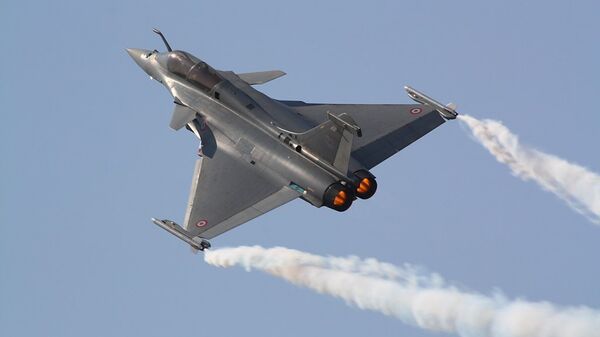Sitting beside Indian Defence Minister Rajnath Singh, Air Force Chief Rakesh Kumar Bhadauria issued a strong warning to the political leadership of India, claiming that the Rafale fighter jet is insufficient to meet the country's defence needs.
IAF veteran Vijainder K Thakur told Sputnik that Rafale is definitely the best aircraft in the IAF's inventory now. However, a determined adversary like the Pakistan Air Force could turn the tables on the IAF by deploying longer-ranged Chinese PL-15 missiles on an updated version of the JF-17 jet.
“The technical advantage gained by the IAF through the acquisition of the Rafale would be transient because it would be based largely on the weapon systems and sensors of the Rafale,” Thakur said.
The IAF's excessive focus on platforms rather than sensors and weapon systems was evident during the Kargil conflict with Pakistan two decades ago. “The IAF fulfilled the expectations only after it made emergency purchases of Laser-Guided Bombs and targeting pods,” Thakur said.
Powered Up JF-17
The Pakistan Air Force’s single engine multirole fighter, the JF-17 manufactured by the Chengdu Aircraft Corporation, is due for a major upgrade, similar to the advanced technologies seen on the J-20 stealth fighter, the Chinese newspaper Global Times reported earlier this year.
It is confirmed by the Chinese outlet that the upgraded JF-17 fighter jet will have “an infrared search and track system and a radar cross section reducing ‘pseudo-stealthy’ airframe”.
The JF-17 fighter jet has been also equipping with PL-15 Beyond Visual Range air-to-air missile that has posed serious concern among the US Air Force due to the long range of its missiles.
Herbert J. Carlisle, the then head of the US Air Force’s combat command, was quoted by Flight Global as saying that outmatching the Chinese PL-15 air-to-air missile in particular is an “exceedingly high priority”.
“The PL-15 and the range of that missile, we’ve got to be able to out-stick that missile,” US Air Force’s Command chief had said in 2015.
Lessons From Balakot Strike and Options for India
On February 27 2019, a day after the IAF struck an alleged terror training camp at Balakot, the PAF surprised the IAF with its longer range AMRAAM and better supporting sensor capability.
“IAF allowed itself to be outgunned by focusing on platform acquisitions, rather than weapon system and sensor upgrades. With sufficient military foresight, the IAF could have armed its Su-30MKI with longer range air-to-air missiles acquired from Russia rather than continuing to rely on the lesser ranged missile ordered years ago from Ukraine,” IAF veteran Thakur asserted.
The Indian Air Force ordered a large batch of Russian air-to-air missiles such as R-27, R-73 very shortly after Balakot strike.
Emphasising the importance of indigenous Astra air-to-air missile, Indian Air Force Chief Bhadauria said at a seminar in New Delhi on Friday that when the missile goes on to the Su-30 and MiG-29, that the power of parity and better performance will spread across the air force.
The Indian Air Force will start taking delivery of the Rafale jets in May 2020.



